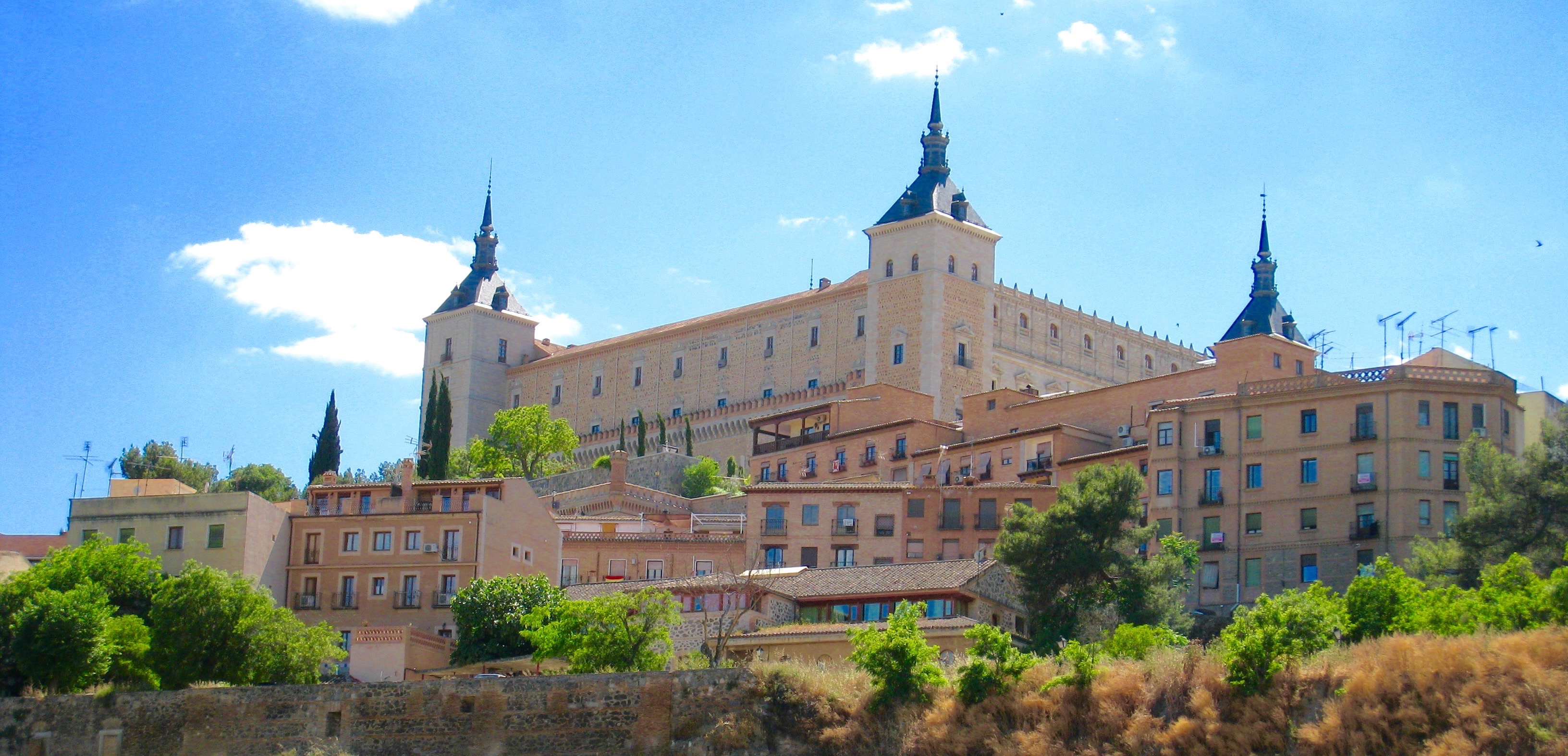 Our last morning in Suances broke sunny and clear. After breakfast, we drove into town and walked along the beach until ten o’clock, when we returned to the Albatros to check out. We dumped our bags in the hatch of our Volvo SUV and motored to Santander Airport to catch a flight to Madrid. The AVIS agent who had rented the car to us three days prior, a somewhat surly gentleman, asked, “Well, did you find Suances?” He deliberately mispronounced the town’s name exactly the way we had when we picked up the car and asked for directions. Before we left the agency, he once again mispronounced it. We thanked him again for the correction and walked away, leaving him to mumble something under his breath. read more…
Our last morning in Suances broke sunny and clear. After breakfast, we drove into town and walked along the beach until ten o’clock, when we returned to the Albatros to check out. We dumped our bags in the hatch of our Volvo SUV and motored to Santander Airport to catch a flight to Madrid. The AVIS agent who had rented the car to us three days prior, a somewhat surly gentleman, asked, “Well, did you find Suances?” He deliberately mispronounced the town’s name exactly the way we had when we picked up the car and asked for directions. Before we left the agency, he once again mispronounced it. We thanked him again for the correction and walked away, leaving him to mumble something under his breath. read more…
Hardwired
Darcy McClain
Europe 2013: The Guggenheim – Bilbao, Spain
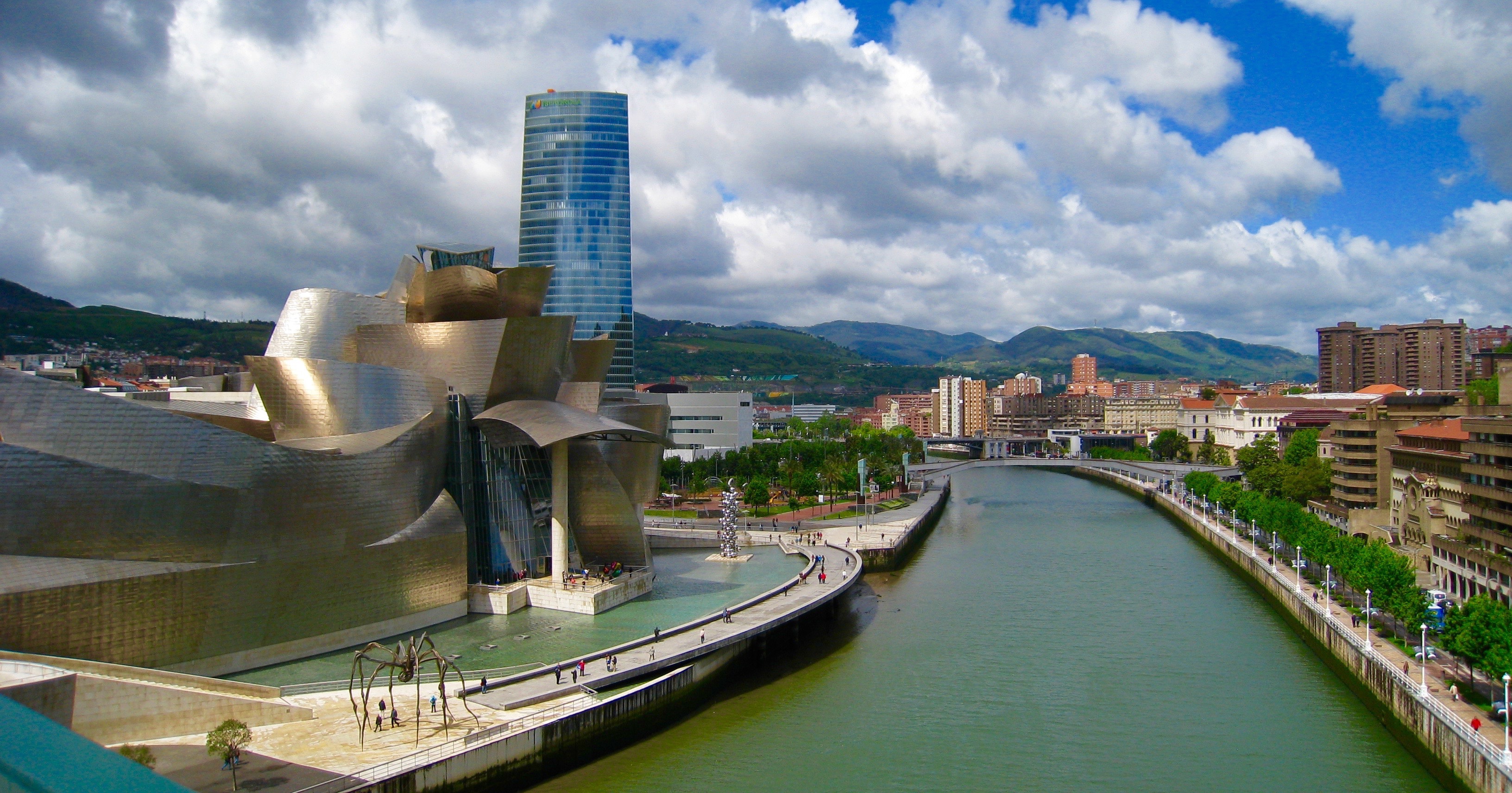
Another cloudy morning greeted us as we went downstairs for breakfast at the Albatros. We wanted to eat, then get a head start on the drive to Bilbao to visit the Guggenheim Museum, which I had wanted to visit since I’d seen Dancing House, also known as the Fred and Ginger house, in Prague, Czech Republic. I wasn’t as interested in the exhibits as much as the architecture of the building itself. I hoped the weather would hold so I could take some decent pictures. We filed into the dining room along with the French tour group, also up early but for an outing into the Spanish countryside. A pleasant and exuberant group, they asked if we would join them for breakfast. We politely declined and pointed out that their tables were reserved for their gathering only.
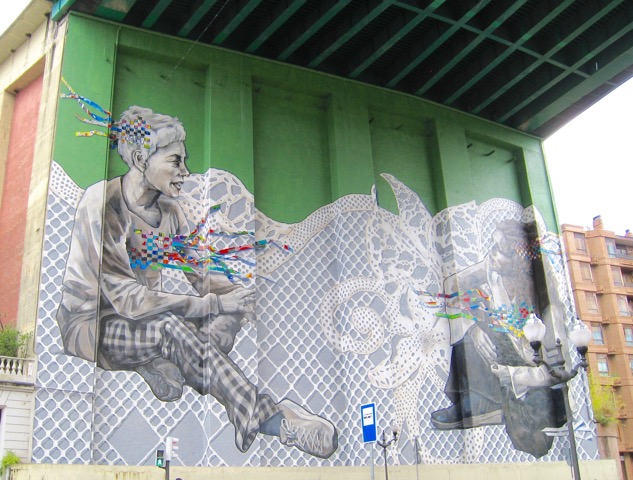
Mural Under Puente de la Salve
Rain pelted us during the hour-and-a-half drive from Suances to Bilbao, but despite the inclement weather we enjoyed the trip, especially when the road hugged the coastline along the Bay of Biscay. The rain and the terrain reminded me of the Florence, Oregon coastline. During my college days at the University of Oregon, I used to spend hours strolling the uninterrupted miles of beaches that stretched along the dazzling Pacific Ocean.
I knew from research that a thriving cultural sector is an essential part of any great city, just as expanses of greenbelts, which limit sprawl, are important to the health of urban dwellers and help them feel more connected to nature. But for me, the star-quality draw in Bilbao had nothing to do with green spaces. My sights were set on finally seeing Frank Gehry’s shimmering titanium, limestone, and glass attraction—the Guggenheim.
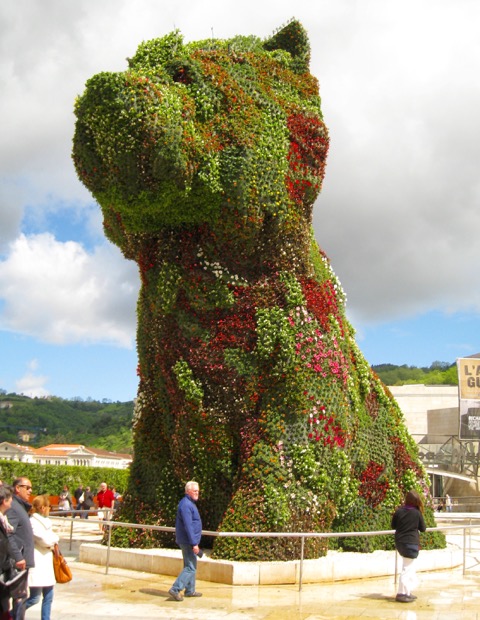
Puppy, by Jeff Koons
Prior to my visit to Bilbao, I had read an article about the “Bilbao Effect,” or “the Guggenheim Effect,” as the locals refer to it. By 1980, Bilbao, the fourth largest city in Spain, was decimated by the collapse of its steel and shipbuilding industries, its factories shuttered and its port in disrepair. After Spain joined the EU, the Basque authorities embarked on an ambitious revitalization program. They hired expensive architects to design a new airport, a metro system, and a footbridge, Zubizuri, designed by the neofuturistic architect Santiago Calatrava Valls. But the city’s biggest achievement was convincing Solomon R. Guggenheim to build a branch of the legendary Guggenheim Museum in Bilbao. For the project, they hired Frank Gehry. Critics referred to Gehry’s design as “mercurial brilliance.” The museum is the centerpiece of the Bilbao Art District.
Five years after construction, Bilbao estimated that the museum’s impact on the economy at around $168 million, more than the cost of construction of the building, which came in on budget at $89 million. In 2012, more than one million people visited the world-class museum, half of them from abroad. Bilbao has become the model for attracting investment, brands, tourism, and cultural energy through a historic cultural institution, which has transformed a struggling post-industrial city into a worldwide cultural power.
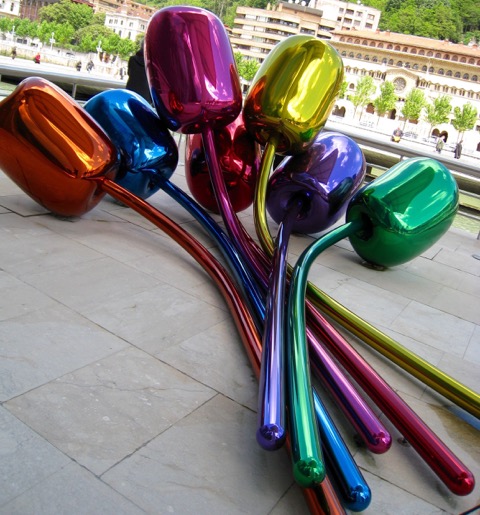
Tulips, by Jeff Koons
As we exited the motorway and threaded our way through Bilbao’s traffic-congested streets, the skies began to clear. We found a parking spot close to the Guggenheim and hopped out. Since it was still too overcast for picture taking, we decided to tour the museum first and snap photos later. I was in awe from the moment I laid eyes on Gehry’s building as we approached it from the massive steel Puente de la Salve, which crosses over the Nervión River.
At first, I had difficulty keeping my mind on the exhibits, eager for the sun to appear so I could shoot the exterior of the museum, but the significance of the exhibition, L’art en guerre, France 1938–1947: From Picasso to Dubuffet, soon grabbed and held my attention as I toured it. The exhibit had just closed in Paris and opened at the Guggenheim. We spent two somber hours working our way through the war and persecution exhibits, a solemn reminder of the horrors of the war and the genocide carried out because of hatred and fear of certain peoples and religions.
Jed Perl’s article in the New Republic is an accurate critique of the exhibition. Following is an excerpt from his article; a link to it appears at the end of this blog post.
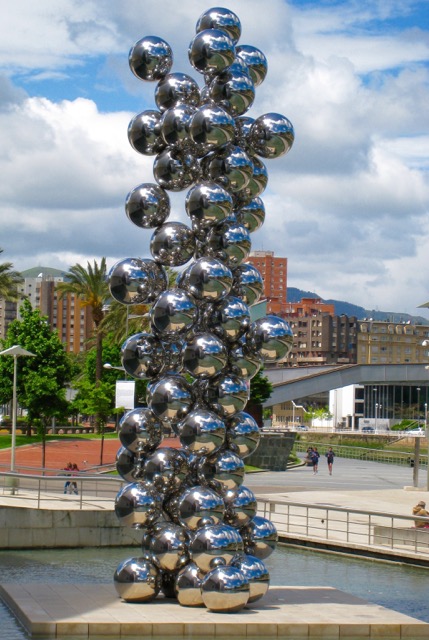
Reflectorama, by Anish Kapoor
The German occupation of Paris precipitated an extraordinary confrontation between the city where modern art was born and the regime that was determined to shatter modernity. The juxtapositions in this exhibition are harrowing. We are asked to take in both the luxuriantly sensuous visions of Henri Matisse and Pierre Bonnard, living in relative safety in Vichy France, and the stark, hardscrabble images done in detention camps by Charlotte Salomon, Otto Freundlich, and Felix Nussbaum, who would soon perish in the German death machine. If it is a story in which the moral giants are outnumbered by the moral pygmies, it is also a story that raises the gravest questions about the morality of art and the artist’s obligation to society.
Between 1939 and 1942, Camp des Milles, housed in a former brick factory, was an internment camp for political dissidents, artists, and intellectuals. After the summer of 1942, and the Nazi plan for the “final solution,” it became the holding site for almost ten thousand Jews awaiting deportation for extermination at Auschwitz. Having been stripped of their freedom and dignity, the detainees quickly organized themselves in order to survive the miserable living conditions. The painters, sculptors, writers, actors, and musicians interned at Camp des Milles had to be endlessly inventive in devising ways to ward off boredom and lift their spirits. Aside from writing and live theatrical and musical shows, over three hundred paintings and drawings are thought to have originated there. Among the “undesirables” held at the camp were Nobel Prize-winning physician Otto Fritz Meyerhof, Max Ernst, Golo Mann, Robert Liebknecht, and German author Lion Feuchtwanger, who escaped to the United States and described his experiences in the camp in his 1941 memoir, The Devil In France – My Encounter With Him In The Summer Of 1940.
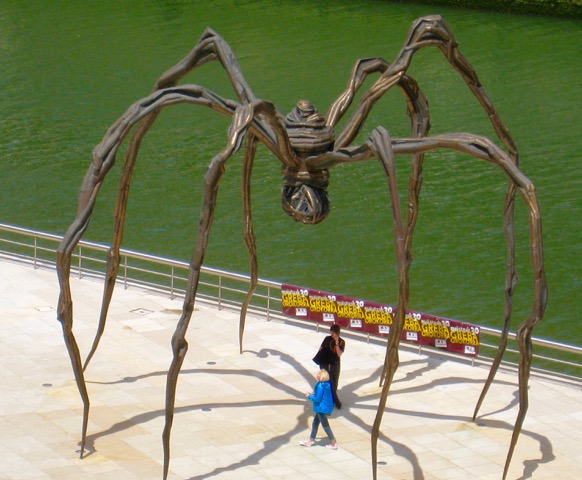
Maman, by Louise Bourgeois
Still discussing the war exhibit, Dave and I gravitated toward the Guggenheim café for a sweet and an espresso. Afterwards, we wandered the museum shop, made a few purchases, and returned to the soaring atrium with its pine, glass, and steel curves uncurling high above us. Lured outside by artist Jeff Koons’s work Tulips from his Celebration series, I snapped off several shots of his bouquet of mirror-polished stainless steel balloon flowers. I wished I had an arrangement of such beauty for my own yard. Also impressive is Louise Bourgeois’s tribute to her mother, the mammoth Maman, a nine-meter-tall bronze spider that suggests both protector and predator and embodies both strength and fragility. From the spider, I gravitated back to the tulips and on to a sculpture of cascading balls, Reflectorama, designed by the artist Anish Kapoor. And definitely original are Fire Fountain by deceased French artist Yves Klein, best seen at night as the photo insert shows, and Fujiko Nakaya’s Fog Bridge, in which steam floats out from under the Salve Bridge every hour. We circled back to the front of the museum and took several pictures of Jeff Koons’s giant, canine-topiary Puppy, one of the first works acquired by the curators. You can’t miss the forty-foot tall, flower-covered West Highland white terrier that isn’t white as you approach the Guggenheim from the Puente de la Salve. Under the bridge is a stunning mural (see photo). Everywhere you look in the Bilbao Art District, you are greeted with visual beauty.
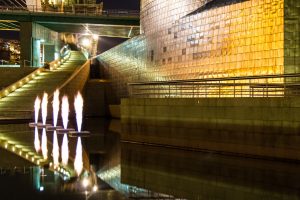
A short walk from the Guggenheim is Calatrava’s Zubizuri, Basque for “white bridge.” The design consists of a curved walkway, which is supported by steel suspension cables from an overhead arch; the deck consists of translucent glass bricks. Access ramps and stairways are located on both banks. I could easily have spent hours taking more photographs, but bad weather started to close in. Thankful for the photos snapped, we walked back across the Salve Bridge to our rental car. We tossed our drizzle-soaked Windbreakers into the backseat and motored out of Bilbao, bound for Suances.
That night, we ate at El Fanal. The establishment is owned by an Australian who is married to a Spaniard. He tends the restaurant, and she cooks. When we entered we were immediately greeted by the owner, who was friendly and outgoing. We sat at the bar and sipped a glass of wine while he talked about Australia, what we must see if we visited, and what had brought him to Suances. He showed us to our table and for starters recommended the grilled octopus. Perfection. The special of the day was a whole grilled turbot with smoky, spiced potatoes. Excellent. We also gave the nod to his wine suggestion, a Don Olegario Albariño 2012 that paired well with our seafood. For dessert, a homemade flan, something I will never turn down. Our flan arrived along with two glasses of a Spanish sherry “on the house,” a pleasant way to end a great meal in a relaxing atmosphere. Again, we had eaten too early for most Spanish diners and were alone in El Fanal until we finished our sherry. On our way out, we noticed most of the restaurant’s seats had filled.
“When the Surrealists Met the Nazis: Picasso, Paris, and modern art in Vichy France” by Jed Perl. The article can be read in its entirety.
Europe 2013: Suances, Spain
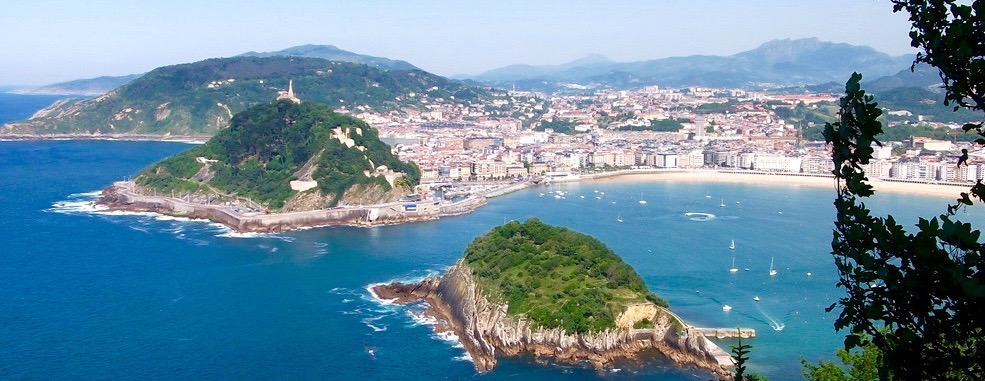
Sunday morning I stood on the balcony of our room at the Altis Avenida Hotel in Lisbon and watched people pour from the underground metro. Across the street policemen gathered. Curious, I glanced up and down the avenue. More officers hiked the gradual grade and lingered at the corner to converse. I wondered if Portugal’s terror alert level had shifted higher after the murder of Lee Rigby in London. As more officers and then men in military uniforms began to gather en masse, I moved to the balcony off our bathroom, which had a better view of the street that ran in front of our hotel. Now, military personnel flanked both sides of the avenue and stood in the median strip. Erring on the safe side, I told Dave, then called the front desk. The woman on duty said it was an annual military event but didn’t say of what kind. She seemed nonplussed, so I thanked her and hung up but kept a watchful eye until we had packed and were ready to leave for the airport. We had a plane to catch to Santander, via Madrid.
Security at the Lisbon Portela Airport was tight, but all of Europe was on heightened alert, the TAP agent at the terminal informed us, especially after the murder of Lee Rigby and the stabbing of the French soldier Cédric Cordier. Her comment came as a surprise, as we hadn’t heard or read about this latest incident. We boarded, and the hour-and-fifteen-minute flight went fast. From Madrid we flew to Santander, a short fifty-five-minute ride, then rented a car for our three-day stay in Suances, which is on the central coast in the province of Cantabria. I had questioned Dave about visiting this part of northern Spain, as I had heard it can be cold, wet, and somewhat dreary in May, but his mind was made up. Since I had never been disappointed with his travel choices, I went along. And as I’ve stated in an earlier blog post, growing up overseas had taught me from a young age to simply go with the flow. Well, my “flow” was about to be put to the test…in a minor way.
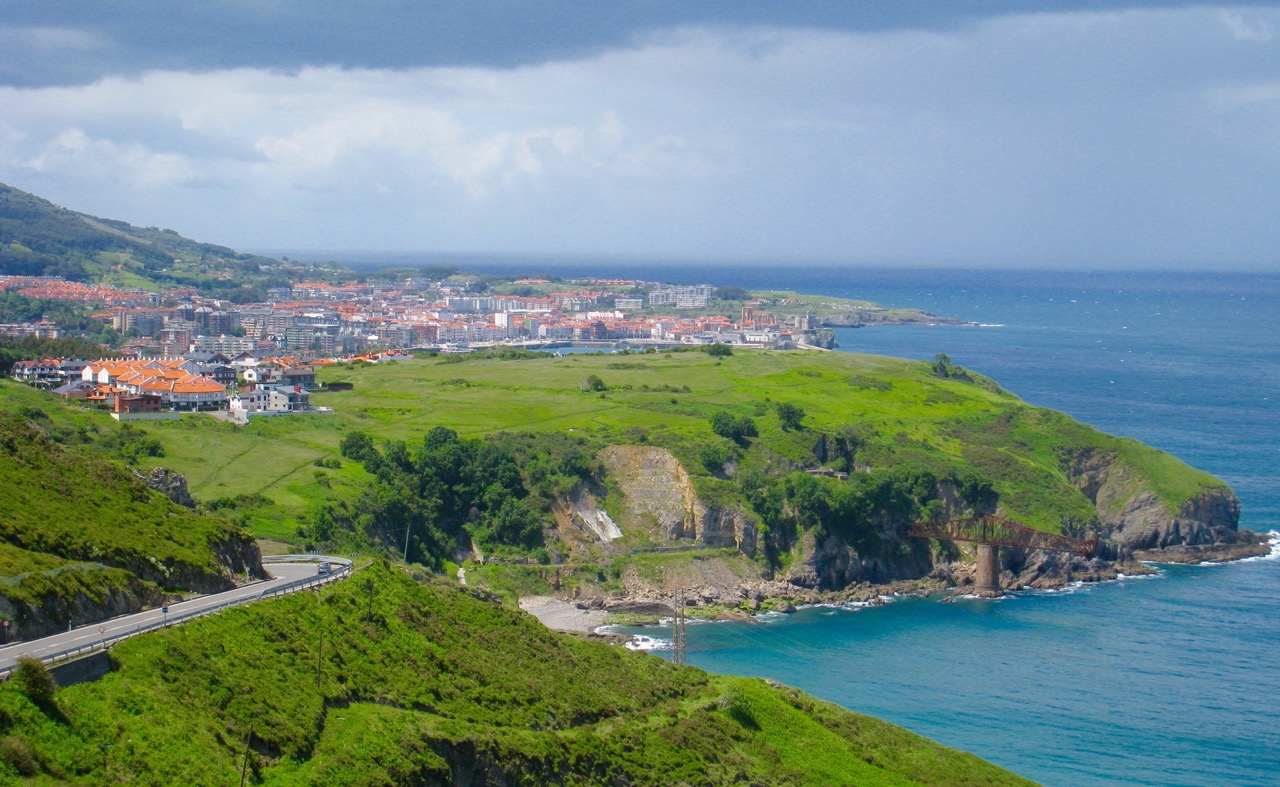 Rain followed us on our drive from Santander to Suances, and we never saw the sun again that day. As we closed in on afternoon, the temperature began to fall, and a cold breeze snaked its way into the car. Thankfully, the antibiotics had knocked out our colds, so I wasn’t concerned about the inclement weather. When we pulled into the front lot of the Albatros Hotel, Dave looked at me and said, “Uh, this wasn’t exactly what I had in mind.” I asked him what he expected from a hotel with the word “albatross” in its name. We checked in and followed the directions to our room. I have a keen sense of smell, and a faint musty odor hung in the dimly lit hall. The room was sparsely furnished, the bed resembled twin cots shoved together, and the shower drain in the dated bathroom was so clogged with hair, the water would not drain. I called housekeeping to unclog the shower and went to the window to see the tranquil view—cows grazed in a lush pasture, and patches of blue peeked through an overcast sky. We unpacked, and I suggested we go downstairs for a cocktail before dinner.
Rain followed us on our drive from Santander to Suances, and we never saw the sun again that day. As we closed in on afternoon, the temperature began to fall, and a cold breeze snaked its way into the car. Thankfully, the antibiotics had knocked out our colds, so I wasn’t concerned about the inclement weather. When we pulled into the front lot of the Albatros Hotel, Dave looked at me and said, “Uh, this wasn’t exactly what I had in mind.” I asked him what he expected from a hotel with the word “albatross” in its name. We checked in and followed the directions to our room. I have a keen sense of smell, and a faint musty odor hung in the dimly lit hall. The room was sparsely furnished, the bed resembled twin cots shoved together, and the shower drain in the dated bathroom was so clogged with hair, the water would not drain. I called housekeeping to unclog the shower and went to the window to see the tranquil view—cows grazed in a lush pasture, and patches of blue peeked through an overcast sky. We unpacked, and I suggested we go downstairs for a cocktail before dinner.
 On this trip we had two inside jokes. We could never find mustard for our sandwiches in any of the French delis we ate at, and no green olives for Dave’s vodka, not even in Italy of all places. We kidded each other about packing mustard before leaving on our next European trip and carrying olives as well. This reminded me of my father, who loved cilantro after being introduced to the herb in Mexico City. He would carry it with him in a small baggie and put it on almost everything. No wonder we kids love it.
On this trip we had two inside jokes. We could never find mustard for our sandwiches in any of the French delis we ate at, and no green olives for Dave’s vodka, not even in Italy of all places. We kidded each other about packing mustard before leaving on our next European trip and carrying olives as well. This reminded me of my father, who loved cilantro after being introduced to the herb in Mexico City. He would carry it with him in a small baggie and put it on almost everything. No wonder we kids love it.
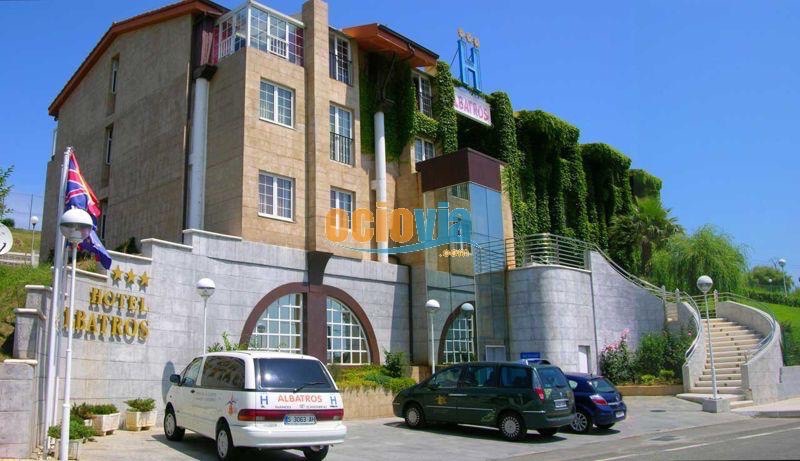 In the bar lounge, I ordered wine, and Dave a vodka on the rocks. When the server left, I asked, “Why didn’t you ask for olives?” He replied, “I’ve given up.” The server returned with our drinks, and to our surprise placed a bowl of large Spanish olives on the table “for us to snack on.” We explained our dilemma in Italy, and she said, “I know. There they make olive oil from them, but in Spain we eat them.” As for finding mustard in France, she said, “A lot of French people holiday in Suances, and the French love their mayonnaise.” We were about to find out just how much they loved it. We finished our drinks and went into the dining room for dinner. Because of the rain, we had decided to eat at our hotel rather than walk into town.
In the bar lounge, I ordered wine, and Dave a vodka on the rocks. When the server left, I asked, “Why didn’t you ask for olives?” He replied, “I’ve given up.” The server returned with our drinks, and to our surprise placed a bowl of large Spanish olives on the table “for us to snack on.” We explained our dilemma in Italy, and she said, “I know. There they make olive oil from them, but in Spain we eat them.” As for finding mustard in France, she said, “A lot of French people holiday in Suances, and the French love their mayonnaise.” We were about to find out just how much they loved it. We finished our drinks and went into the dining room for dinner. Because of the rain, we had decided to eat at our hotel rather than walk into town.
Our server handed us menus and left. We chose the fresh catch of the day, but the moment we placed our order, our server said, “Oh sorry, we don’t have any more fish. We have a French tour group at the hotel and they ate all of the fish. We only have beef.” We inquired about shrimp cocktail as a starter. Oh yes, they had plenty. The boiled shrimp arrived in the shell and with the heads on, which was fine, but swimming in mayonnaise? Not even tartare or spicy mayonnaise—just plain, warm mayo. I scraped the bland condiment off the shellfish, and we shared the starter. The meal did not improve. The beef was round steak: thin, the texture of shoe leather, and tasteless. We enjoyed our green salads, passed on dessert because the French tour group had eaten all of it, and instead finished our meal with a good Madeira. Although our stay hadn’t started as planned, the visit ended on a positive note. Overall, the room was clean and provided the basics, and the hotel staff was friendly and helpful, making up for any shortcomings in the accommodations.

